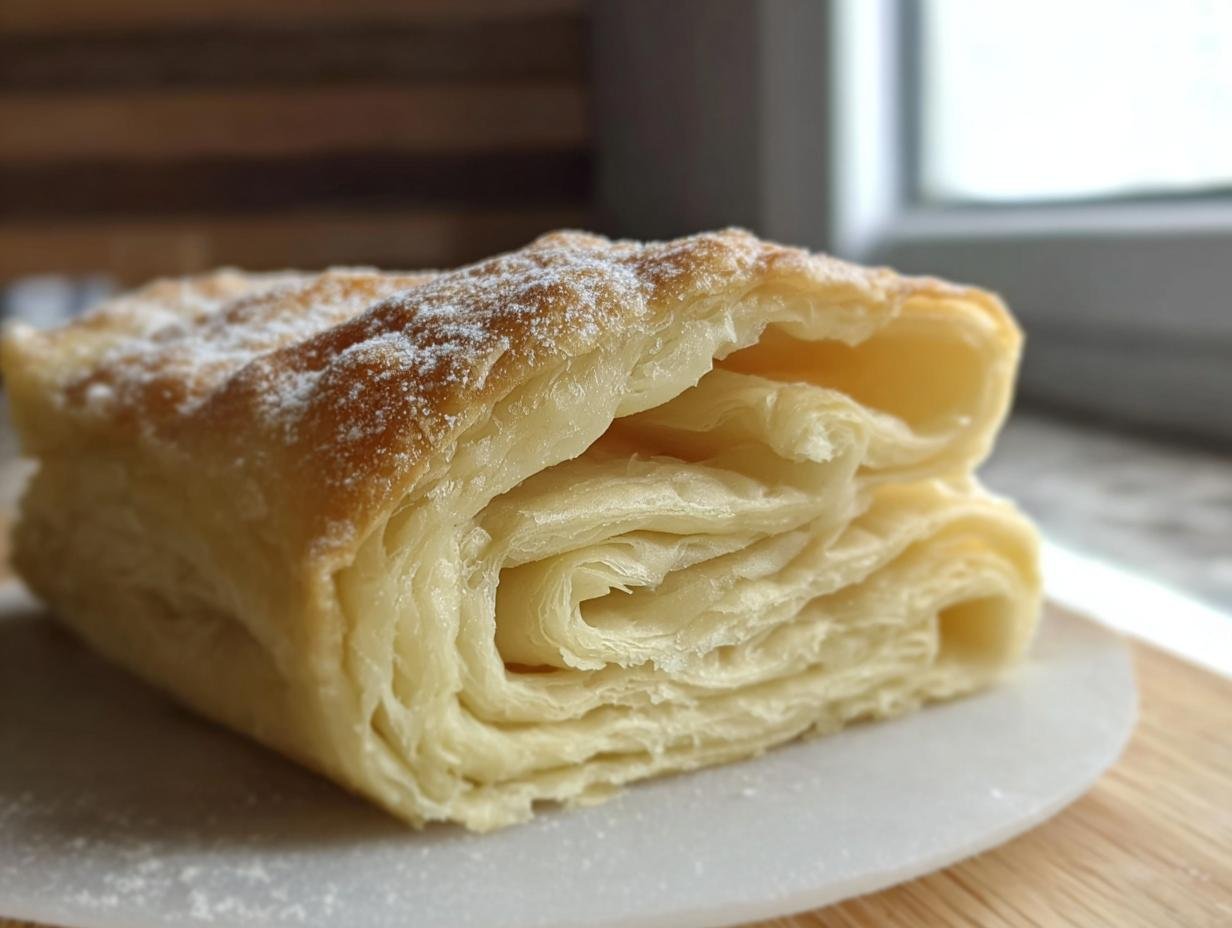Okay, let’s talk about puff pastry. It just feels so fancy, right? Like something you’d only get at a posh bakery or, you know, from a culinary god like Gordon Ramsay. I remember the first time I tried making it myself it was a total disaster, buttery mess everywhere! But that’s the beauty of learning Gordon Ramsay’s Puff Pastry recipe; it breaks down something truly impressive into steps you can actually follow. Trust me, once you get this technique down, you’ll feel like a total kitchen rockstar, ready to whip up anything from elegant appetizers to show stopping desserts.
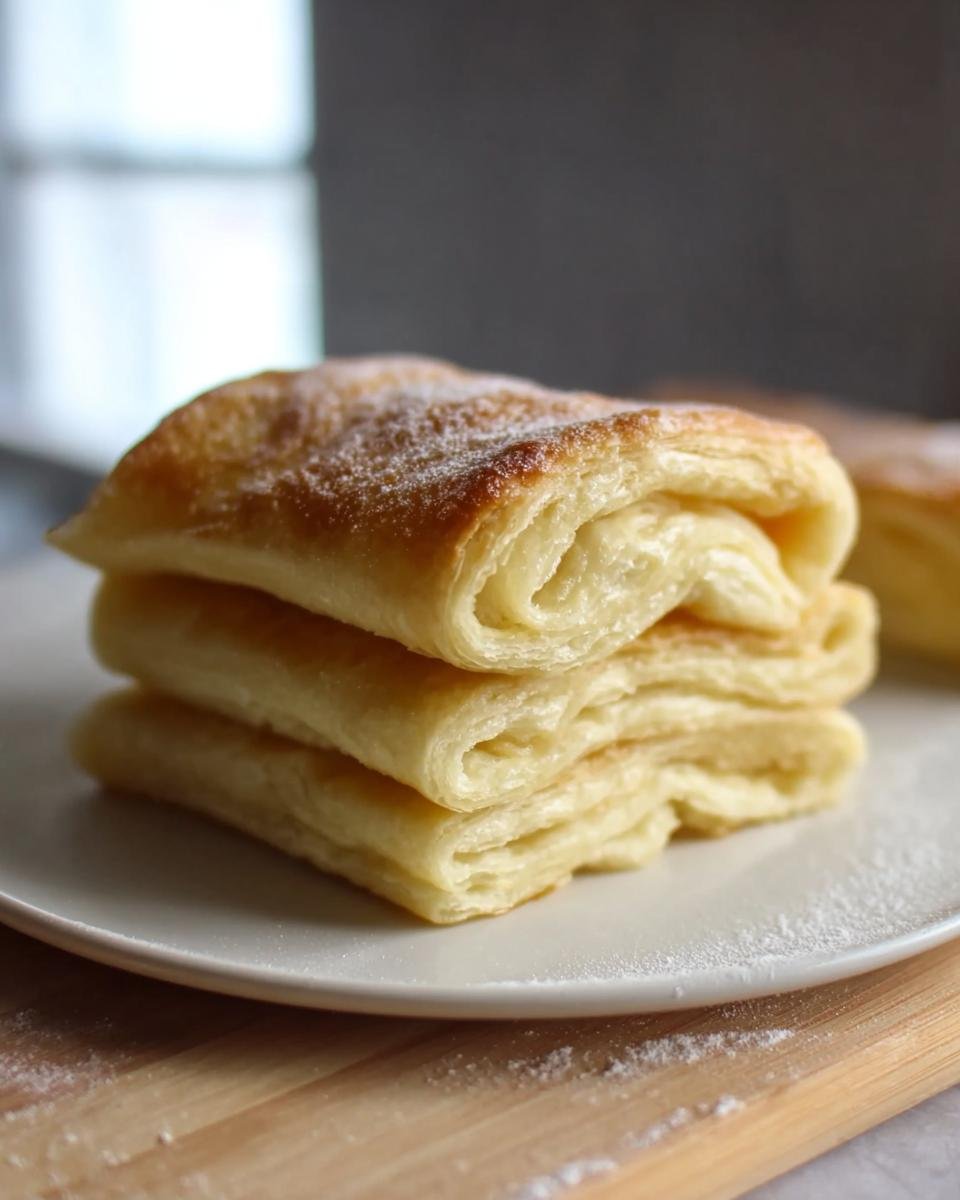
Why You’ll Love Gordon Ramsay’s Puff Pastry
Honestly, making your own puff pastry is such a game-changer. When you nail Gordon Ramsay’s Puff Pastry, you get:
- Incredible, shatteringly flaky layers – way better than store-bought!
- So much versatility – think tarts, turnovers, pot pies, and elegant desserts.
- The ultimate satisfaction of mastering a classic baking technique.
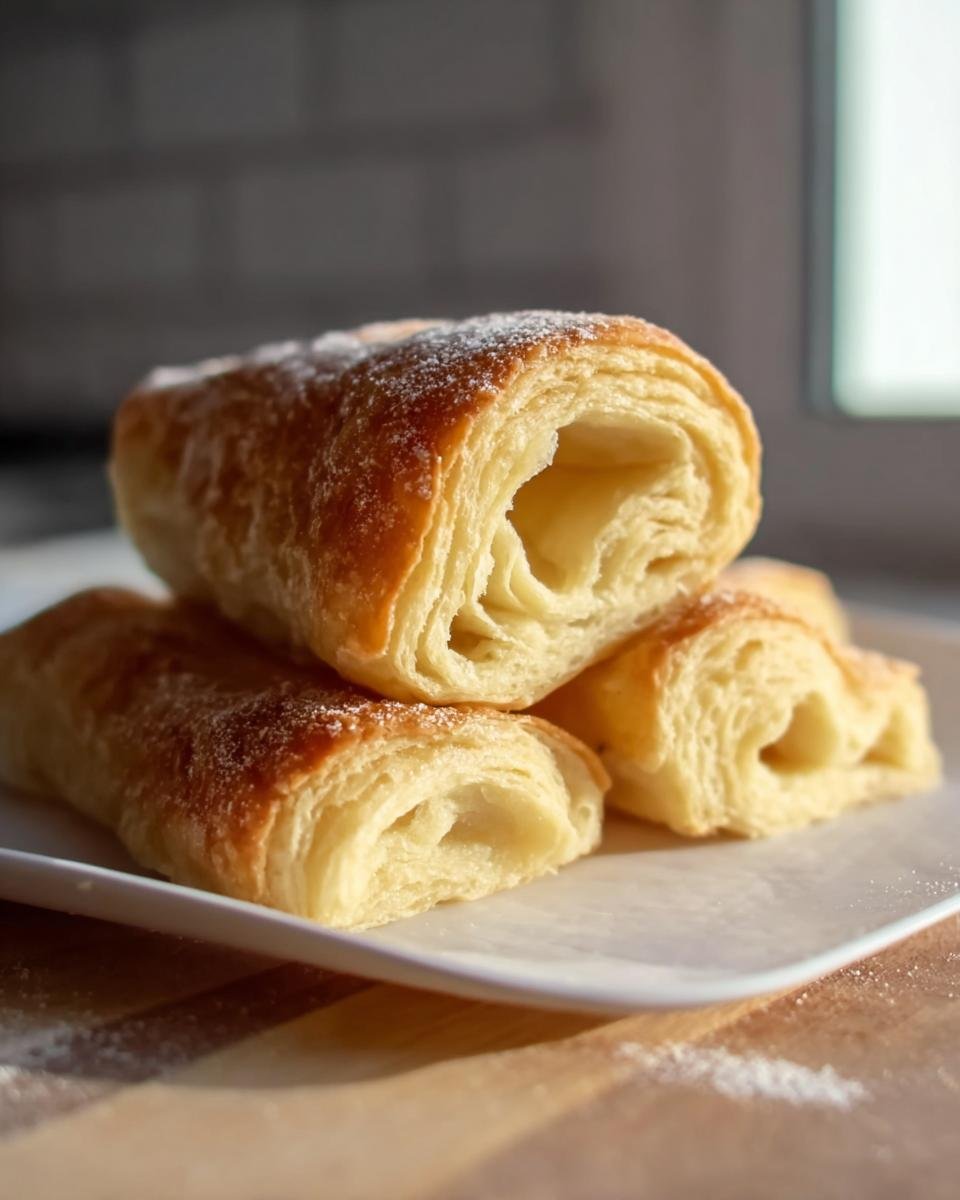
Essential Ingredients for Gordon Ramsay’s Puff Pastry
Alright, getting the right ingredients is half the battle when you’re tackling Gordon Ramsay’s Puff Pastry. The most important thing? Keep it all COLD. Seriously, I can’t stress that enough. Cold ingredients are the secret sauce for those amazing flaky layers.
Here’s what you’ll need:
For the Dough:
- 250g all-purpose flour
- 125g unsalted butter, cold and cut into little cubes
- 1 tsp salt
- 125ml ice water (seriously, ICE water!)
For the Butter Block:
- 250g unsalted butter, nice and cold
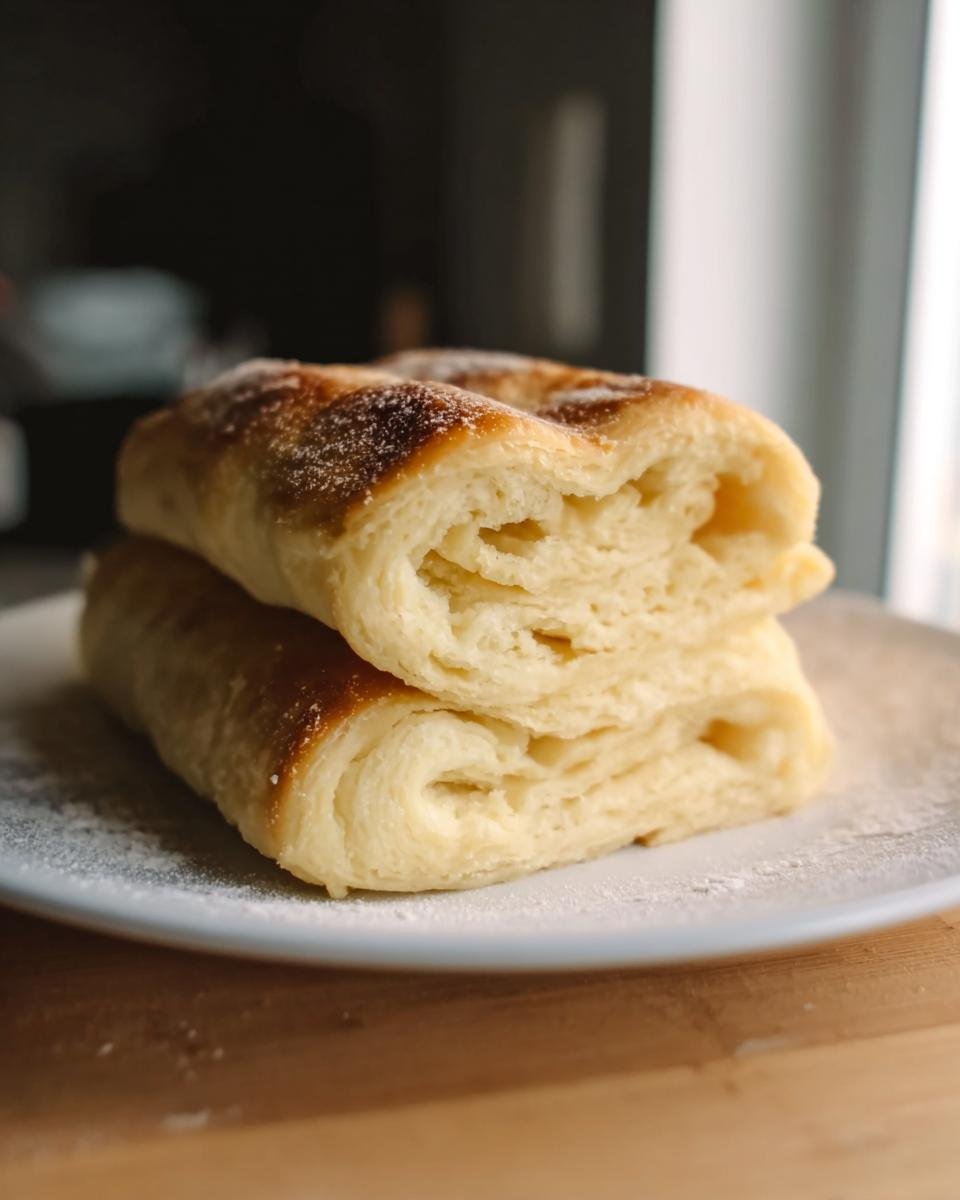
Equipment Needed for Perfect Puff Pastry
You don’t need a fancy setup to make amazing puff pastry, but having the right tools really helps. Make sure you have:
- A good rolling pin – it’s your best friend here!
- Plastic wrap – we’ll use this a lot to keep things neat and cold.
- A baking sheet – just in case you want to bake something off right away after you make it. Maybe try this super yummy baked brie!
Step-by-Step Guide to Gordon Ramsay’s Puff Pastry
Okay, here’s where the magic really happens! Making Gordon Ramsay’s Puff Pastry might seem a bit daunting, but if you follow these steps carefully, you’ll be amazed at what you can create. Remember, patience and keeping everything cold are your best friends throughout this process.
Preparing the Dough Base
First things first, let’s get that dough going. Grab a big bowl and toss in your flour and salt. Now, add those cold, cubed butter pieces. Using just your fingertips or a pastry blender, work that butter into the flour until it looks like chunky breadcrumbs. You want some little pea-sized bits of butter still visible – don’t get rid of them all! They’re key to those flaky layers.
Creating the Butter Block
While the dough is having a little rest in the fridge, let’s prep the butter block. Take your other 250g of really cold butter and place it between two sheets of plastic wrap. Now, get in there with your rolling pin and give it a good whack and roll until it forms a sort of square, about 6 inches by 6 inches. It should be pliable but still firm. Wrap it up tight and pop it back in the fridge to firm up again.
Encasing the Butter and First Fold
Alright, time to bring the dough and butter together! Lightly flour your counter. Roll out that chilled dough into a rectangle that’s roughly twice the size of your butter block. Place the firm butter block right in the middle. Now, fold the dough over the butter like you’re wrapping a present, making sure to pinch all the seams really well so that butter is totally enclosed. This is your first big secret step!
Performing the ‘Turns’ (Folds)
This is what creates all those beautiful layers! Gently roll out your ‘package’ into a long rectangle again. Now, we do a ‘letter fold’: fold one-third of the dough over the middle section, then fold the other third over that, so it’s like a neat little packet of three layers. Wrap this up in plastic wrap and pop it back in the fridge for at least 30 minutes. We’ll repeat this rolling, folding, and chilling process two more times. That makes a total of three ‘turns’. Don’t skip the chilling between each turn – it’s crucial for Gordon Ramsay’s Puff Pastry to work its magic and keep the butter from melting into the dough!
Final Chilling and Storage
After your third and final fold, wrap the puff pastry super tightly in plastic wrap. Now it needs a good long chill – at least an hour in the fridge. This part is really important before you cut into it. If you’re not using it right away, no worries! It’ll keep in the fridge for up to two days, or you can freeze it for longer storage. Just make sure it’s wrapped up so it doesn’t dry out.
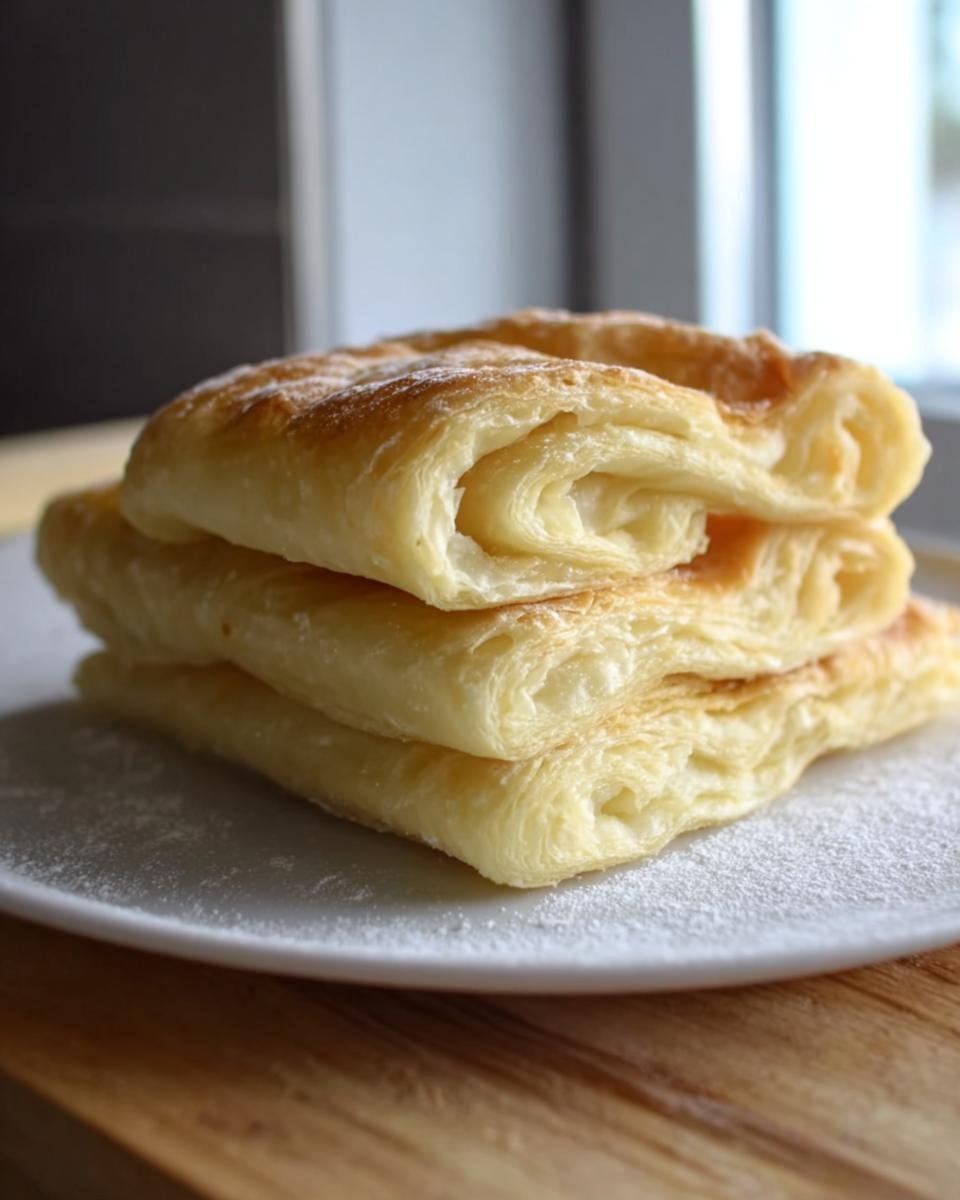
Tips for Puff Pastry Perfection
Alright, let’s talk about getting that puff pastry *perfect*. It’s all about a few key things, and honestly, once you get these down, you’ll be making Gordon Ramsay’s Puff Pastry like a pro. First rule: keep everything COLD! Seriously, I mean it. If your butter gets too warm, it’ll just melt into the dough and you won’t get those gorgeous, flaky layers. Make sure your kitchen isn’t crazy hot, or work fast!
Also, don’t overwork the dough. When you’re folding and rolling, be gentle. Overmixing makes puff pastry tough, and nobody wants that – we’re going for light and airy here! You’ll know it’s ready for the oven when it looks beautifully layered and slightly puffed up after baking. Trust your eyes and your touch!
Common Puff Pastry Challenges and Solutions
Even with the best intentions, sometimes things don’t go perfectly when making puff pastry. Don’t panic! Most issues with Gordon Ramsay’s Puff Pastry are totally fixable. If you notice butter leaking out during rolling, that usually means your butter block got too soft. Just pop the whole thing back in the fridge for 15-20 minutes to firm it up again before continuing. If the dough tears, it might be a bit too cold or you’re rolling too aggressively. Gently pinch the tear closed or patch it with a scrap piece.
Uneven layers? That often comes down to inconsistent folding or not taking enough time to chill between turns. Be patient; it’s worth it for that incredible flaky texture!
Frequently Asked Questions about Puff Pastry
Making puff pastry can bring up a few questions, especially when you’re diving into something as specific as Gordon Ramsay’s Puff Pastry recipe. Don’t worry, I’ve got you covered!
Can I use salted butter?
While unsalted butter gives you more control over the saltiness of your pastry, you *can* use salted butter in a pinch. Just reduce the salt you add to the dough slightly, maybe by a quarter teaspoon. Keep in mind that the flavor might be a little different, but it’ll still be flaky and delicious!
How long does homemade puff pastry last?
Freshly made puff pastry is best used within a day or two. Make sure you keep it tightly wrapped in the fridge so it doesn’t dry out. If you need to store it longer, freezing is a great option! Just wrap it well in a couple of layers of plastic wrap, and it should last for about a month. Thaw it overnight in the fridge before you plan to use it.
What can I make with puff pastry?
Oh, the possibilities are endless! My favorite is probably this gorgeous baked brie in puff pastry – it’s a total crowd-pleaser. But really, you can use it for so many things: savory pies, turnovers filled with cheese or veggies, sweet fruit tarts, adorable little empanadas, or even as a topping for casseroles. And don’t forget fun ideas like this festive pumpkin bread, which can be adapted with puff pastry!
Why didn’t my puff pastry puff up?
This is usually because the butter got too warm and melted into the dough during the folding process. The key is keeping everything cold! If the butter melts, it can’t create those steam pockets that give us the gorgeous puff. Another reason might be if the pastry wasn’t sealed well, letting steam escape too early. Don’t beat yourself up, just try again – that chilling between folds is super important!
Nutritional Information Disclaimer
Just a heads-up, any nutritional info you see for this amazing puff pastry is just an estimate, okay? It can totally change depending on the exact brands you use and any little tweaks you make – like if you add a bit more butter (we’ve all been there!). So, take it as a guideline, not a hard-and-fast rule!
Share Your Gordon Ramsay’s Puff Pastry Creations!
Now that you’ve got your hands on this amazing Gordon Ramsay’s Puff Pastry, I’d absolutely LOVE to see what you make! Did you whip up some incredible turnovers? A show-stopping dessert? Please share your results in the comments below, or tag me on social media – let’s celebrate your baking wins together! And if you loved this recipe, consider leaving a star rating; it really helps out fellow bakers looking to master this technique. You can learn more about our baking adventures here!
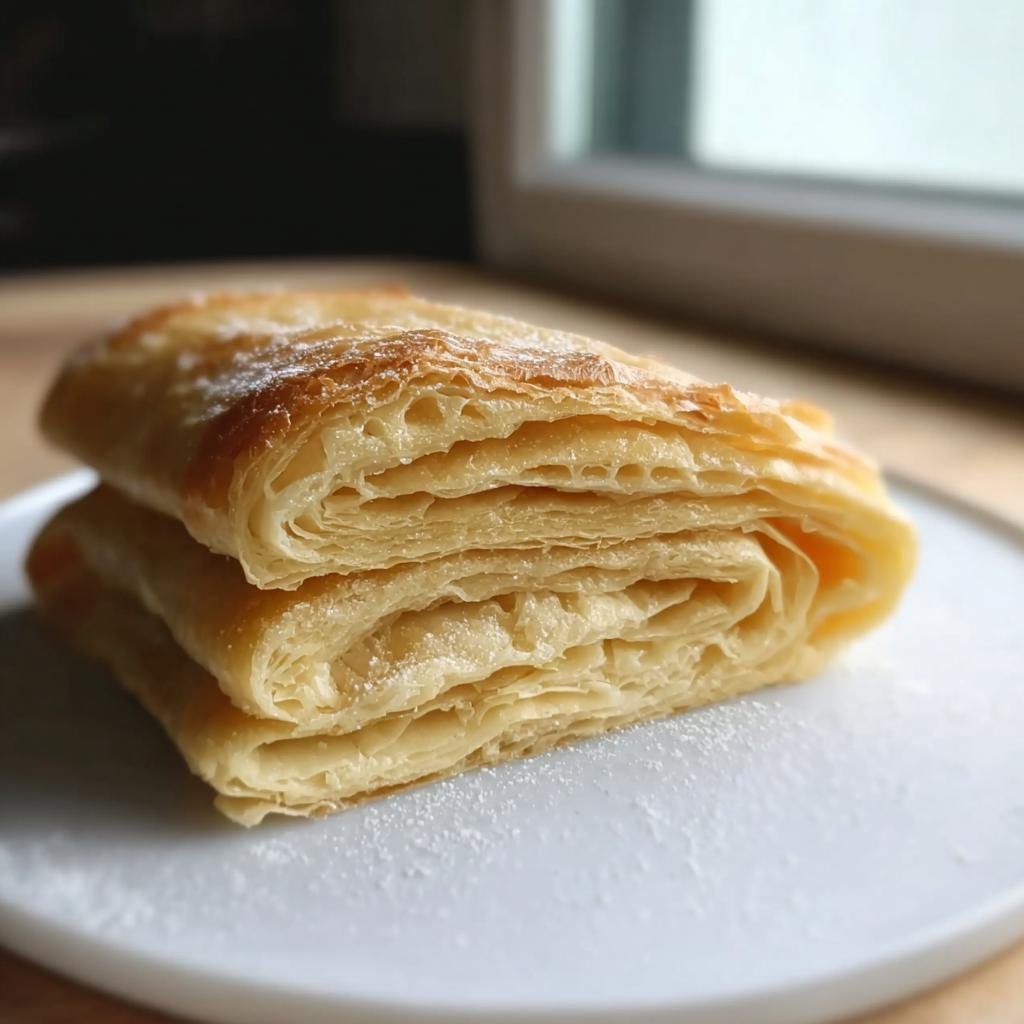
Gordon Ramsay’s Puff Pastry
Ingredients
Equipment
Method
- Combine flour and salt in a large bowl. Cut in the cold butter cubes using your fingertips or a pastry blender until the mixture resembles coarse crumbs with some pea-sized pieces of butter remaining.
- Gradually add ice water, mixing until the dough just comes together. Do not overmix. Form the dough into a rough rectangle, wrap it in plastic wrap, and refrigerate for at least 30 minutes.
- While the dough chills, prepare the butter block. Place the cold butter on a piece of plastic wrap. Cover with another piece of plastic wrap and pound it with a rolling pin to soften it slightly. Shape it into a square approximately 6×6 inches.
- Wrap the butter block tightly in plastic wrap and refrigerate until firm, about 30 minutes.
- On a lightly floured surface, roll out the dough into a rectangle roughly twice the size of your butter block. Place the chilled butter block in the center of the dough.
- Fold the dough over the butter block, like an envelope, sealing the edges. Pinch the seams tightly to enclose the butter completely.
- Gently roll out the dough into a long rectangle. Perform a ‘letter fold’ by folding one-third of the dough over the center, then folding the other third over that, creating three layers. Wrap in plastic wrap and refrigerate for 30 minutes.
- Repeat the rolling, folding, and chilling process two more times, for a total of three ‘turns’. Ensure the dough is always chilled between turns.
- After the final turn, wrap the puff pastry tightly in plastic wrap and refrigerate for at least 1 hour, or until ready to use. It can be stored in the refrigerator for up to 2 days or frozen for longer storage.

